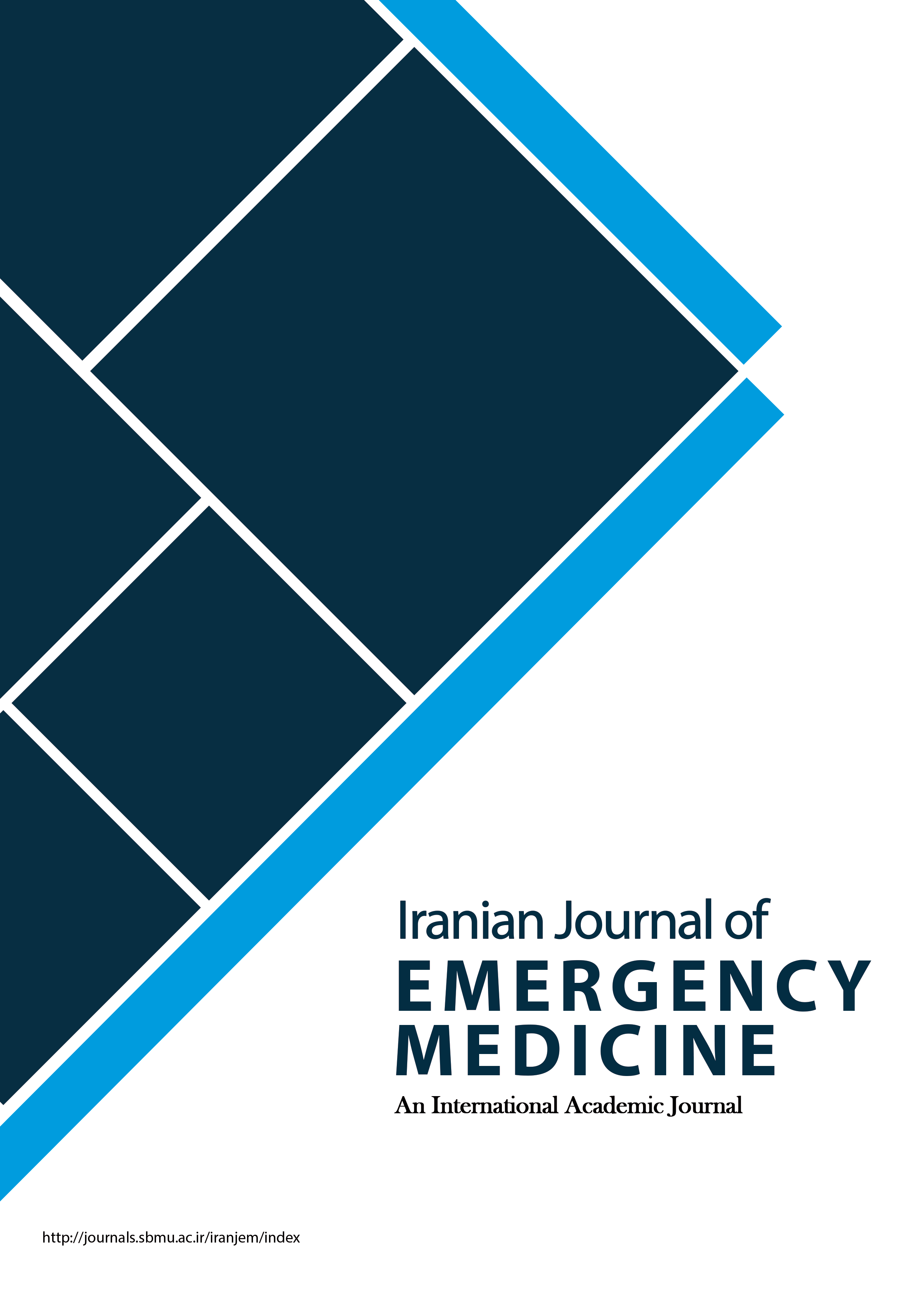Comparison of Outcomes between Two Methods of Referring to Hospital in Patients with Acute Myocardial Infarction; a Cross-Sectional Study
Iranian Journal of Emergency Medicine,
Vol. 8 No. 1 (2021),
23 Azar 2020,
Page e2
https://doi.org/10.22037/ijem.v8i1.32869
Introduction: The prevalence of acute myocardial infarction in urban communities is rapidly increasing and the need for timely and appropriate actions is felt. Pre-hospital emergency service can aid in providing a quick response to this problem. Therefore, the aim of this study was to investigate and compare outcomes between hospital visits via hospital emergency services (ambulance) and patients visiting the hospital on their own (private car) among those with myocardial infarction.
Methods: The present cross-sectional study was performed on patients diagnosed with myocardial infarction in two groups of those who called the emergency services and those who visited the hospital themselves, from March 2018 to September 2019, in Shahid Chamran Heart Training Medical Center in Isfahan. After recording patients' profile information, Chi-Square and independent T-test were used to compare the two methods of referring to the hospital.
Results: The records of 281 patients were reviewed. More than 80% of the patients were men. Among them, only 21 (7.5%) died, most of whom (17 patients) were in the group visiting using private cars (p = 0.002). In addition, the initial evaluation variables (p = 0.044), hypertension (p = 0.039), creatinine (p = 0.010) and systolic blood pressure (p = 0.031) were different between the two groups of presenting via ambulance and via private car.
Conclusion: The correlation between death outcome and type of hospital referral is a testament to the effectiveness of pre-hospital emergency services in preventing secondary adverse events. Based on this finding, it could be said that the type of transfer to the hospital and pre-hospital services provided for patients are impactful and important.



